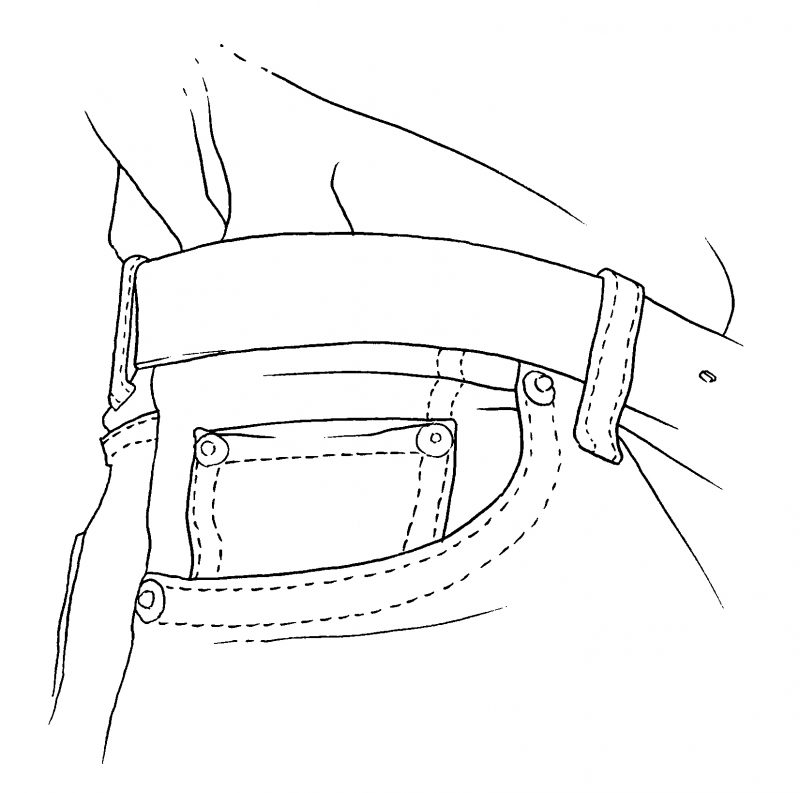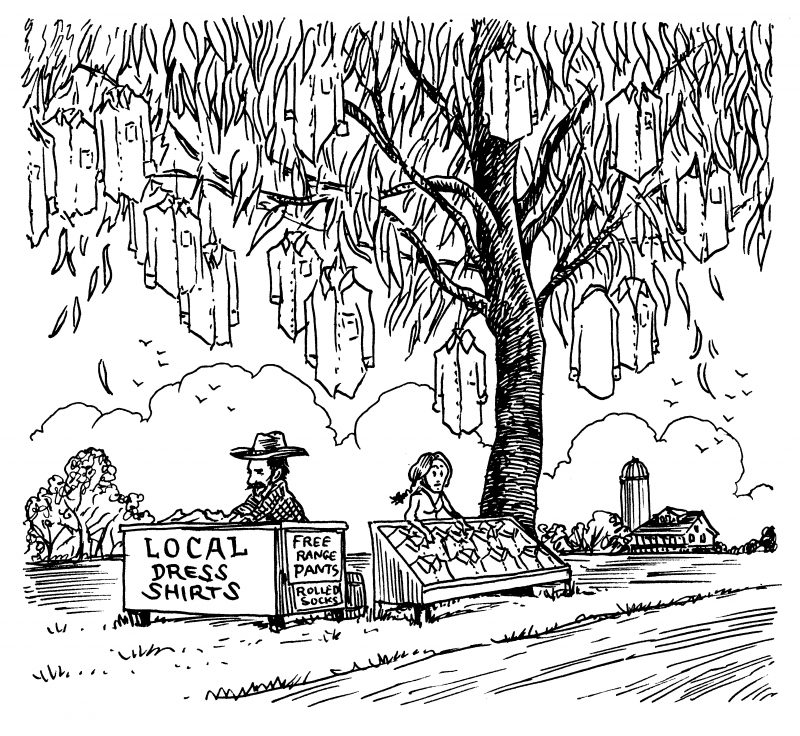There’s a nascent conscientious-clothing movement, but it’s several years behind the one for food. Michael Pollan’s food writing changed the way I eat. Before, what mattered to me were taste and price, and not even taste so much. I ate mostly take-out Chinese and fantasized about alimentary pastes. Now I’m a militant flexitarian, and worship at the farmers’ market. Pollan is now an era—so popular you don’t actually have to read his books. To be sure, many of his ideas about the problems with how we get our food, and what we might do to fix things, were well and widely expressed before, but Pollan came at the right time with the right tone. His rules (“Eat your colors,” “Pay more, eat less”) can be implemented without a major lifestyle change.
What I want to know is this: where are the Michael Pollans for clothing? They must be out there, writing book proposals. In fact, a journalist named Elizabeth Cline has a book scheduled to be published by Penguin Portfolio in the spring of 2012 that was sold as “the Omnivore’s Dilemma of clothes.” Fashion has parallels to food: most clothing is too cheap, that cheapness has tragic costs, clothing is an agricultural product, and we consume too much of it. Affordable designer collaborations are like the rise of the home gourmet, but now we should be ready for responsibility beyond taste and design. I’m looking for the textile version of Food Rules, some aphoristic guidelines that won’t make me feel evil when buying a shirt (though I like at least a little guilt with every transaction). Show me how to spend wisely and conscientiously. Does a made in usa label mean better made? More ethically made? Or just more nationalistic? How about a union label? As a recovering bargain-hunter, I would like to know what a reasonable price is for a men’s dress shirt. Not a good deal, but a fair deal. A price that hasn’t factored in extraordinary human pain and economic distress and environmental destruction. A price that’ll help sustain responsible craft and industry.

I’m looking for a centrist buying guide. If you offer an extreme solution, like a cult that makes excessive demands, you’ll get extreme followers. Those followers will be enthusiastic at the start, but unlikely to stick with the plan for long, and won’t be good for recruiting the more stable masses. For example, a call to buy all clothing at thrift stores might be ethically defensible, but you’re crazy if you think everyone—professionals, workers, parents shopping for back-to-school outfits for their kids—will commit to...
You have reached your article limit
Sign up for a digital subscription and continue reading all new issues, plus our entire archives, for just $1.50/month.
Already a subscriber? Sign in





